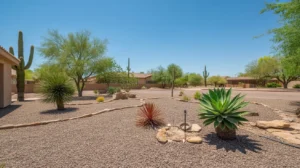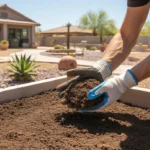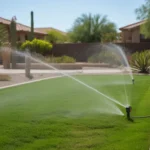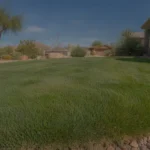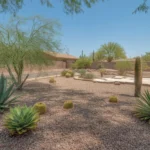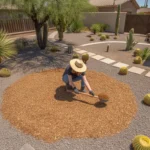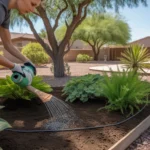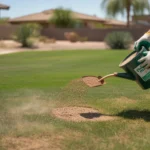Dry, compacted soil is a common challenge for Mesa homeowners striving to maintain a lush, healthy yard in the arid Southwest climate. With limited rainfall and intense summer heat, it’s crucial to adopt strategies that help your landscape retain moisture and resist drought stress. By improving your soil structure, selecting resilient plants, and implementing water-wise practices, you can transform your Mesa yard into a thriving oasis that weathers dry spells with ease.
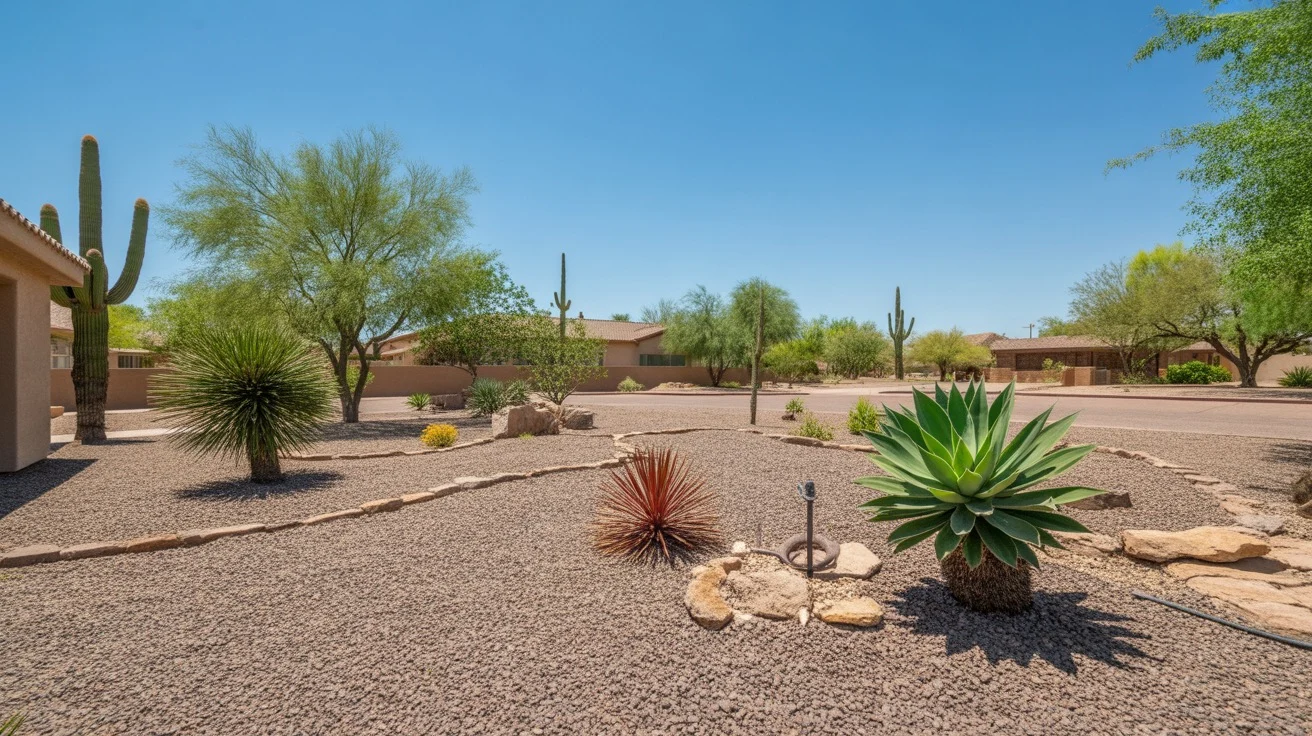
Assess and Amend Your Soil
The first step in tackling dry soil is to evaluate its current condition. Mesa soils are often heavy in clay, which can lead to poor drainage and compaction. This makes it difficult for water to penetrate deeply and for roots to grow freely. To improve soil structure, consider adding organic matter such as compost, aged manure, or peat moss. These amendments help loosen tight soils, improve water retention, and provide essential nutrients for plant growth.
When incorporating amendments, aim to work them into the top 6-8 inches of soil where most plant roots grow. For best results, perform a soil test to determine your soil’s specific nutrient deficiencies and pH level. This will guide you in selecting the most appropriate amendments and fertilizers for your Mesa yard’s unique needs. By investing in soil health, you’ll create a foundation that supports resilient, drought-tolerant plants.
Another effective technique for improving dry soil is mulching. Apply a 2-3 inch layer of organic mulch, such as shredded bark or wood chips, around your plants. Mulch helps retain soil moisture, regulate soil temperature, suppress weeds, and break down over time to enrich the soil. Be sure to keep mulch a few inches away from plant stems to prevent rot and disease.
Choose Drought-Tolerant Plants
When landscaping in Mesa’s dry climate, selecting plants that are naturally adapted to arid conditions is key. Drought-tolerant plants have evolved various mechanisms to conserve water and withstand periods of limited moisture. These include deep root systems, waxy leaf coatings, and the ability to store water in their leaves or stems.
Some excellent drought-tolerant options for Mesa yards include:
- Desert Marigold (Baileya multiradiata)
- Penstemon (Penstemon species)
- Texas Sage (Leucophyllum frutescens)
- Ocotillo (Fouquieria splendens)
- Agave (Agave species)
- Palo Verde (Parkinsonia species)
When selecting plants, consider their mature size, sun exposure needs, and water requirements. Group plants with similar water needs together to create efficient irrigation zones. This allows you to tailor watering schedules to each zone’s specific requirements, minimizing water waste and ensuring each plant gets the moisture it needs to thrive in Mesa’s dry soil conditions.
Implement Efficient Irrigation
Proper watering is crucial for managing dry soil and promoting a drought-resistant landscape. Instead of frequent shallow watering, aim for deep, infrequent irrigation that encourages roots to grow deeper into the soil profile. This helps plants access moisture reserves during dry spells and reduces their reliance on surface water.
Consider installing a drip irrigation system, which delivers water directly to plant roots, minimizing evaporation and runoff. Adjust your irrigation schedule seasonally, providing more water during the hot summer months and less during the cooler winter season. Early morning watering is best, as it allows plants to absorb moisture before the heat of the day sets in, reducing evaporative losses.
To further conserve water, invest in a smart irrigation controller that adjusts watering based on local weather conditions and soil moisture levels. These devices can automatically reduce watering during rainy periods and increase it during heatwaves, ensuring your plants receive the optimal amount of moisture. By using water wisely, you can maintain a vibrant yard while being a responsible steward of Mesa’s limited water resources.
Embrace Xeriscaping Principles
Xeriscaping is a landscaping approach that prioritizes water conservation and drought-resilient design. By embracing xeriscaping principles, you can create a beautiful, low-maintenance yard that thrives in Mesa’s dry climate. Key elements of xeriscaping include:
- Replacing water-hungry lawns with drought-tolerant groundcovers, gravel, or permeable hardscapes
- Grouping plants with similar water needs to create efficient hydrozones
- Using native and adapted plants that are well-suited to the local climate
- Incorporating features like dry streambeds and rock gardens that add visual interest without requiring irrigation
- Minimizing turf areas and opting for low-water alternatives like artificial turf or native grass blends
By designing your landscape with water conservation in mind, you can create a yard that not only withstands dry soil conditions but also reflects the natural beauty of the Sonoran Desert. Xeriscaping not only saves water but also reduces maintenance needs, as drought-adapted plants require less pruning, fertilizing, and pest control than thirsty, exotic species.
Maintain and Monitor Your Landscape
Regular maintenance is essential for keeping your drought-resistant landscape in top form. Monitor your plants for signs of stress, such as wilting, yellowing, or dropping leaves. These may indicate a need for adjustments in watering, fertilization, or pest management. Prune plants as needed to remove dead, damaged, or diseased foliage, which can harbor pests and drain energy from the plant.
Regularly check your irrigation system for leaks, clogs, or misdirected sprinkler heads. Repair any issues promptly to avoid wasting water and ensure even coverage. Consider conducting a water audit to assess your system’s efficiency and identify areas for improvement. By staying proactive and attentive, you can catch and address problems early, promoting the long-term health and resilience of your Mesa yard.
In addition to maintenance, keep an eye on your soil moisture levels. Periodically check the soil a few inches below the surface to ensure it’s moist but not waterlogged. Adjust your watering schedule as needed based on weather conditions and plant needs. By consistently monitoring and caring for your landscape, you’ll be able to fine-tune your approach and create a thriving, drought-resistant yard that endures Mesa’s dry soil challenges.
Tackling dry soil in Mesa requires a multi-faceted approach that combines soil improvement, plant selection, efficient irrigation, and xeriscaping principles. By working with your local climate and prioritizing water conservation, you can create a resilient, vibrant yard that remains beautiful and functional, even in the face of drought. With dedication and proper management, your Mesa landscape can serve as an inspiring example of sustainable desert living.

